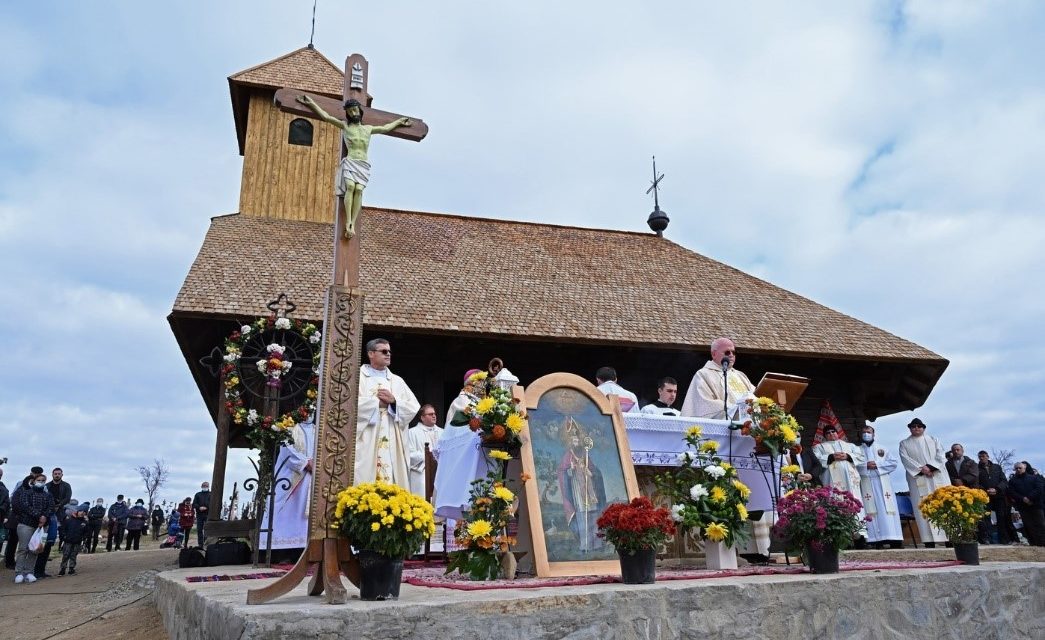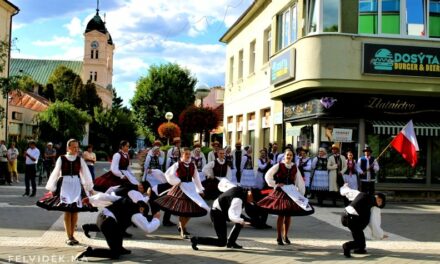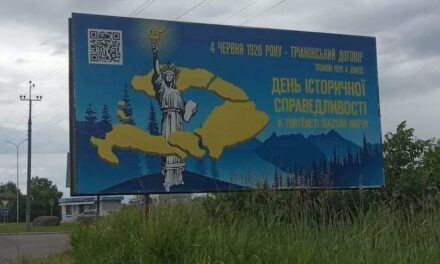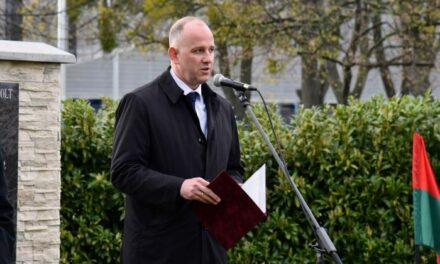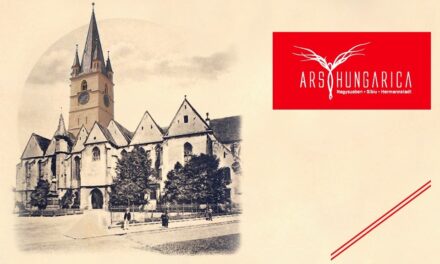The Roman Catholic monument church, restored with the support of the Hungarian state, was re-consecrated on Sunday in Nagypatak (Valea Mare) in Moldavia as part of the farewell on St. Martin's Day.
At the rededication of the monument registered as the oldest Roman Catholic wooden church in Moldova, Bishop Iosif Paulet of Iași thanked Ambassador Zákonyi Botond representing Hungary in Bucharest for saving the monument.
After the event, László Pogár, president of the Moldavian Csángo Magyars Association (MCSMSZ), told MTI: this is the first time that a monument is renovated with Hungarian support in a settlement inhabited by Csángós in Moldavia. He added that about 25 priests and many hundreds of believers took part in the rededication of the wooden church in Parány. He evaluated it as follows: the renovation and inauguration contributed to increasing the recognition of Hungarian-inspired csángós in Moldova.
During the renovation, the foundation of the church was strengthened, rotten beams, rafters and other wooden elements were replaced, and the building was re-roofed with oak shingles. The renovation of the monument, coordinated by the MCSMSZ, was supported by the Hungarian Ministry of Foreign Affairs with 75,000 euros.
Ambassador Botond Zákonyi told MTI: the church liturgy was held in Romanian, but MCSMSZ president László Pogár and himself said a few sentences in Hungarian as well. He added: this is the easternmost Catholic church dedicated to St. Martin , and St. Martin, who was born in Savaria, today's Szombathely, during the early Christian era, is also considered a bit of a Hungarian saint, even though he lived long before the conquest.
Ceremonies are held only on exceptional occasions in the tiny wooden church in the joint cemetery of Nagypatak and Forrófalva (Faraoani). Larger churches were built in both settlements.
According to the study of museologist Petru-Iulian Bucur, Hussites settled in Forrófalva in 1420. The settlement was mentioned for the first time in 1435, and according to local tradition, the small wooden church was also built at that time, the first written mention of which dates from 1605. Over time, the small church was rebuilt several times. According to the museologist's assumption, the western door of the church was created during the repairs between 1745 and 1762. On the door you can still read the inscription "Márton Bálint made it" carved into the wood.
Source: Erdély.ma

